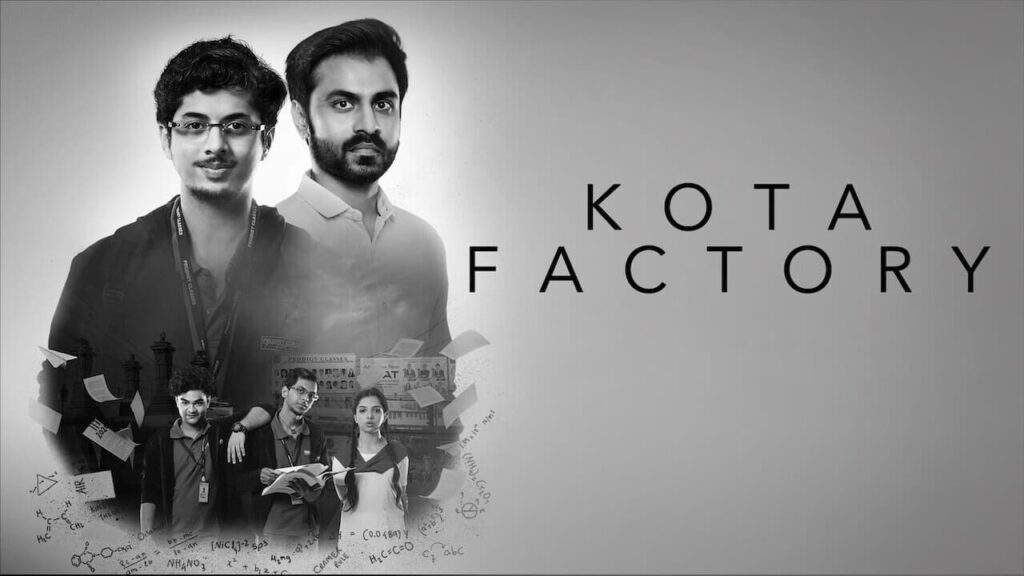Jitendra Kumar’s program features strong dialogue that has supported each season. See our assessment of Season 3 of Kota Factory.
When Kota Factory first opened, there were a few 14- and 15-year-old children remaining in Kota, which was dubbed the “education capital of India.” After that, these bright young brains were ready for the most difficult exams in India, like NEET and IIT. The program also began drawing attention to the coaching system’s small shortcomings.
However, Jeetu Bhaiya emerged as the main character of Kota Factory, uniting the entire series by portraying these young soldiers as Dronacharya on the battlefield. However, the Dronacharya did not divide the children into two groups: the studious Kauravas and the less studious Pandavas.

The plot of the second season was more disorganized, with Jeetu Bhaiya switching allegiance and these kids’ personal issues taking center stage. He also went over the importance of progress, both personally and professionally, with his students. establishing Aimers, his own institute.
Finally, Kota Factory’s third season has adjusted the balance, keeping the problems of the students and the instructor in Kota equal. As he deals with the suicide of a student who was not ready for JEE Advance and choose to settle with an NIT, Jeetu Bhaiya at last feels emotionally spent. She was encouraged to aspire higher by Jeetu Bhaiya, but after a setback, she gave up on life.
Do students’ triumphs and struggles mirror those of their teachers? Season 3 of Kota Factory breaks it down, including moments of failure and moments of success.
This season’s five episodes have been carefully broken down into five general student problems, while Jeetu Bhaiya’s personal conflict serves as the focal point for the whole thing. Even though Jeetu Bhaiya deals with mental health issues, he fights like a war hero for his students as well. In the first episode, he helps them deal with issues of low self-esteem and jealousy of others’ success. He also calls them out when they stray from their true goals and choose an easier path to financial success, giving them advice when they are demotivated and risk failing an exam too soon.
This time, Rajesh Kumar (Rosesh Sarabhai) and Tilottama Shome are presented as Jeetu Bhaiya’s left and right hands by Kota Factory. Tillotama’s Pooja Didi is unquestionably the future of this series, should it continues, even while Rajesh Kumar’s less act excels, providing the drama with a solid and profound foundation.
Since he falters in some of the most crucial moments of the five-episode web series, Mayur More faces pressure from the students to take the lead in the narrative, which is evident on film. Rajmukund Meena, played by Ranjan Raj, is likely to have the greatest high this time around because of his internal battle, his pursuit of answers, and his eventual transformation into a Jeetu Bhaiya likeness.

Pratish Mehta, the season’s director, has worked hard to elevate the dialogue about Kota and draw attention to the true problems facing this education capital, which is fighting capitalism and unnecessarily imprisoning young people. There have, however, been times when Pratish fails to uphold the caliber of his own work or fails to meet his own higher standards.
For example, Vaibhav’s concluding speech, in which he expresses his rage, exasperation, and desperation, resembles an animated rendition of the language from Pyaar Ka Punchnama, starring Kartik Aaryan, and has a similar pace and rhythm. The resemblance is so striking that it seizes the scene’s significance and gravity in an instant!
Similar to this, the moisture that was painted over in Jitendra Kumar’s Jeetu Bhaiya’s house but returned when Jeetu Bhaiya was going through his lowest points in life ought to have been magically supported by well-written prose. However, the moment simply intensifies without ever reaching its peak.
Similar to that, Kota Factory’s music feels a little out of place this time. The music probably settled at some points due to the storyline, but overall, for the most of the passages, it was the other way around. For example, the song Main Bola Hey comes at a period in the series where I had no idea what Vaibhav was going through or how intense his emotions were.
This season, Jeetu Bhaiya is traveling in search of his “Jeevan ka Satya,” which is an intriguing way to provide some balance to the Kota tale. It appears quite real that Jeetu is having difficulty deciding whether to play Krishna or Dronacharya in his pupils’ life. The narrative always revolves around the conflict between being Guru or Sir, Sir or Bhaiya, and it’s fascinating to watch Jeetu Bhaiya’s shortcomings and mistakes openly discussed as he attempts to manage a teaching center.
Even if Kota Factory season 3 has its share of problems, Jeetu Bhaiya has shown us that weak pupils are not always strong. Despite obvious flaws in the current season, its heart is still in the right place. In a pivotal point for the program, Jeetu Bhaiya in the series fiercely defends his students when someone recommends he divides them into studious and less studious groups.




